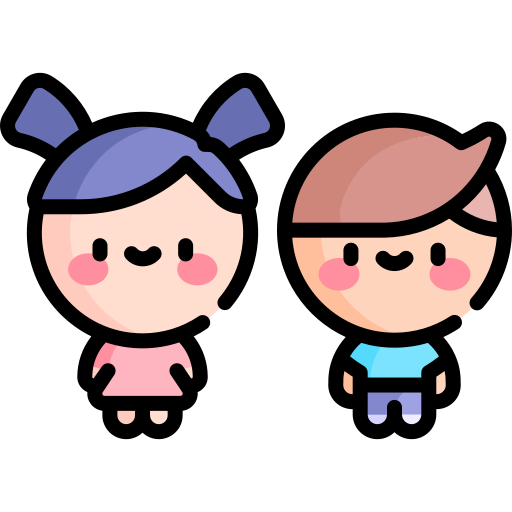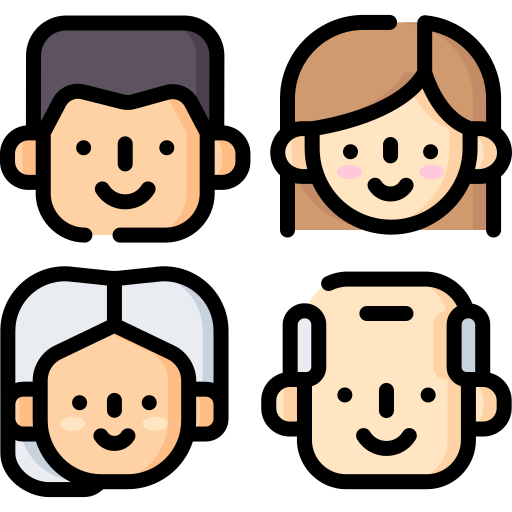Therapy

The Child
The development of children does not always follow the same path. Children can experience problems during their daily activities and in their daily contacts, at home or at school. Because young children may have difficulties expressing themselves verbally, they may express their difficulties by showing physical or mental complaints, such as:
- Inactive, passive behavior
- Lack of concentration, unquietness
- Fear of failure, insecurity
- Headache, stomach ache.
Artistic therapy connects with the phantasy of the child, and with the child’ way of ‘learning by experience’. The therapist uses means which are familiar to children. Drawing, painting and sculpturing enables the child to show its own world, and all it experiences in it. The therapist is skilled in interpreting this ‘language of images’ and can therefore learn to understand what goes on in the child’s mind. In cooperation with the child, artistic exercises are done which connect to its own situation. The child learns to explore and expand its own possibilities, and this way it strengthens its confidence. Children often enjoy drawing, painting or sculpturing. This enjoyment helps them to conquer difficulties.
Thanks to the tangible result, the child can reflect upon its work; there is a visible development that encourages the child to continue on its path.
The artistic therapist helps children:
- to gain more self-confidence
- to express its emotions
- to ‘stabilize’ traumatic experience
- to cope with loss, divorce of parents, or other substantial changes in its life.
The age between 12 and 18 years often has its insecure and stormy phases. In these ages young adults can experience mental or social challenges. A young adult often has difficulties when discussing its mental or social problems with its parents or other adults. Complaints are sometimes more likely to be expressed through problematic behavior, such as:
- introvert and detached behavior
- rebellious behavior, breaking rules and boundaries
- alcohol- and / or drug abuse
- gloom, depression.

The young adult
Artistic therapy can support the young adult in its search for its own identity. By drawing, painting or sculpturing it learns to express the feelings that it finds difficult to describe verbally. A personal work of art can display the young adult’s emotions. By means of specific artistic exercises the young adult can learn to dela with its limits and its possibilities. It develops self confidence.
The artistic therapist helps the young adult to:
- gain more self-confidence
- and/or control emotions
- be more interested in its social surroundings
- to ‘stabilize’ traumatic experiences
- to cope with loss, divorce of parents, or other substantial changes in its life.
Services
Treatment is provided based upon anthroposophical inspiration, which means that there is a focus on the healthy core of the client. This healthy core is the foundation of the treatment. The duration of treatments, the intensity and the exact way of treatment will be different in each individual case. Before starting any treatment, together we will clearly define the specifics of the treatment.
Clients are expected themselves to organize transportation to the therapist center, and cannot be picked up by the therapist, in order to make a clear ‘start’ of the therapy upon entering the therapist center. In individual cases, it is however possible that the clients can be brought home by the therapist. Chantal offers different approaches, which are tailored to the specific needs of each individual client. Techniques which are used are for instance.
CBT Therapy
Cognitive Behavior Therapy is a good option for you if you are looking for a practical and effective treatment that generally achieves results quickly. Cognitive behavioral therapy is a combination of cognitive therapy and behavioral therapy. Cognitive behavioral therapy assumes that thoughts, behaviors, and feelings are related. How do thoughts influence your behavior? CBT teaches you how to change your behavior by redirecting unhelpful thoughts into helping thoughts.
This form of treatment can help you with anxiety, depression and burnout, for example.
ACT Therapy
Acceptance and Commitment Therapy (ACT) is a form of cognitive behavioral therapy. It is a therapy that focuses on six different skills. With these, you learn to become more flexible in coping with obstacles you encounter in your life. Treatment focuses on developing resilience, helping you learn to cope better with problems.
ACT is applicable in many different situations because it is a philosophy that can address any aspect of life. Problems where ACT can help you are: depression, anxiety, burnout, stress and much more.
IEMT
Eye Movement Therapy (IEMT) is a brief therapy that utilises simple eye movements and questioning techniques to change a particular thought pattern that may be problematic for you. IEMT has earned itself a reputation to deliver fast and sustaining results in the field of fear and phobia related problems. Also IEMT has proven its healing value in cases like burn-out and stress.
During the IEMT sessions your eyes will follow a specific pattern, resulting in new connections in the brain. In most cases this leads to the decrease or the total disappearance of emotions which are connected to fear, phobia or other undesired emotions, which arise when a person is confronted with a specific situation (for instance the sight or near presence of spiders, birds, mice, or for instance the confrontation with height or situations reminding of past negative experiences). See also www.iemt.cz
Therapy sessions can be provided for on the following dates:
- Monday
- 15.15-20.00
- Tuesday
- 15.15-20.00
- Thursday
- 15.15-20.00
- Friday
- 15.15-20.00
- Saturdays
- 10.00-13.00
- Sundays
- 10.00-13.00
On individual basis also different dates and times are available.
Most therapies last from 45 minutes to 1 hour (partly depending on the age of the client).
A fee is charged of 1.000 Czech korunas per therapy session of 45 minutes. This fee includes the use of all required materials such as for instance paint, clay, paintbrushes, charcoal, etc.

